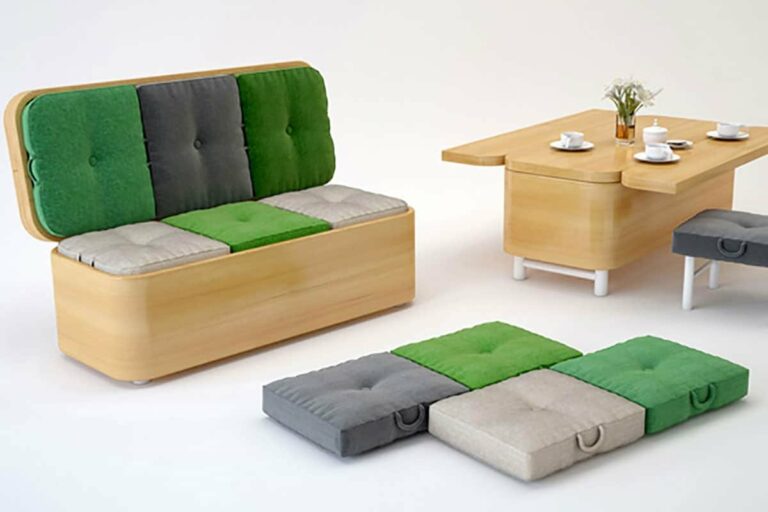Exploring Eco-Friendly Alternatives To Traditional Lacquer Finishes In Furniture
Are you searching for environmentally-friendly substitutes for conventional lacquer finishes in furniture? You’re in the right spot!
As sustainability gains importance, it’s essential to consider cleaner, more sustainable choices for protecting and improving the appearance of furniture.
In this post, we’ll investigate eco-friendly alternatives that offer a beautiful finish while also supporting the health of our planet. If you’re keen on upgrading your furniture style while reducing your environmental impact, let’s examine the options available!
What are some eco-friendly alternatives to traditional lacquer finishes in furniture?
Traditional lacquer finishes have been widely used for finishing furniture for a long time. However, due to environmental concerns, many people are now looking for eco-friendly options. This article will discuss sustainable alternatives to lacquer finishes for furniture.
1. Water-based finishes
Water-based finishes are a great eco-friendly alternative to traditional lacquer finishes. They are made from natural resins and pigments, and they do not contain the harmful chemicals often found in lacquer finishes, such as volatile organic compounds (VOCs).
Water-based finishes are low in odor and emit fewer toxic fumes during application, making them safer for both the environment and the individuals applying them.
Advantages of water-based finishes:
– Low VOC content reduces harmful emissions
– Easy to clean up with water, reducing the use of harsh solvents
– Fast drying time, allowing for quicker production
– Can be applied with a variety of methods, including spraying, brushing, and wiping
2. Shellac
Shellac is another eco-friendly alternative to traditional lacquer finishes. It is derived from the secretions of the female lac bug and has been used as a natural finish for centuries.
Shellac is a renewable resource and has a low impact on the environment. It contains no harmful chemicals or VOCs, making it a safe choice for furniture finishing.
Advantages of shellac:
– Natural and renewable material
– No harmful chemicals or VOCs
– Easy to apply and repair
– Provides a warm and natural-looking finish
3. Natural oils
Natural oils, such as linseed oil, tung oil, and walnut oil, are excellent alternatives to lacquer finishes. These oils penetrate the wood, enhancing its natural beauty and providing a protective layer.
Unlike lacquer finishes, natural oils do not contain harmful chemicals or emit toxic fumes. They are biodegradable and have a low impact on the environment.
Advantages of natural oils:
– Enhances the natural beauty of wood
– Provides a durable and long-lasting finish
– Easy to apply and maintain
– Non-toxic and eco-friendly
4. Wax finishes
Wax finishes are another eco-friendly option for finishing furniture. They are made from natural materials, such as beeswax or carnauba wax, and provide a protective layer on the wood surface.
Wax finishes are easy to apply and maintain, and they do not emit harmful fumes or contain toxic chemicals.
Advantages of wax finishes:
– Natural and biodegradable
– Enhances the wood’s natural color and texture
– Repairs and touch-ups are simple
– Provides a soft and smooth finish
5. Milk paint
Milk paint is an ancient paint recipe that has made a resurgence in recent years as a popular eco-friendly alternative to traditional lacquer finishes. It is made from natural ingredients such as milk protein (casein), lime, clay, and natural pigments.
Milk paint is non-toxic, biodegradable, and easy to use on furniture. It creates a unique and vintage look, providing a natural, matte finish.
Advantages of milk paint:
– Environmentally friendly and non-toxic
– Creates a unique, vintage look
– Easy to mix and apply
– Can be used on a variety of surfaces
6. Natural resin finishes
Natural resin finishes, such as plant-based varnishes and resin oils, offer an eco-friendly alternative to traditional lacquer finishes.
These finishes are derived from natural resins, often extracted from tree sap or plant oils, and provide durable and protective coatings for furniture.
They do not contain harmful chemicals or VOCs, making them safe for the environment and human health.
Advantages of natural resin finishes:
– Renewable and sustainable materials
– Durable and long-lasting
– Enhances the natural beauty of wood
– Low environmental impact
7. UV-cured finishes
UV-cured finishes utilize ultraviolet light to cure and harden the finish, eliminating the need for potentially harmful solvents or chemicals.
These finishes have a low environmental impact, as they produce little to no VOC emissions and have a fast curing time. UV-cured finishes provide a durable and high-gloss finish to furniture.
Advantages of UV-cured finishes:
– Low VOC emissions during application and curing
– Fast curing time, reducing production time
– Provides a glossy and durable finish
– Can be easily repaired and touched up
8. Bio-based finishes
Bio-based finishes are made from renewable resources such as plant oils, resins, and waxes. They are free from harmful chemicals and VOCs, making them an eco-friendly option for finishing furniture. Bio-based finishes offer excellent protection and enhance the natural beauty of wood.
Advantages of bio-based finishes:
– Made from renewable and sustainable resources
– Low environmental impact
– Non-toxic and safe for the environment
– Provides durable and protective coatings
9. Recycled or reclaimed finishes
Using recycled or reclaimed materials to finish furniture is not only eco-friendly but also adds a unique and rustic character to the piece.
Reclaimed finishes can be achieved by repurposing old wooden materials or using salvaged wood. Applying natural oils or waxes to reclaimed wood can enhance its beauty and preserve its history.
Advantages of recycled or reclaimed finishes:
– Reduces waste and promotes sustainability
– Adds character and history to furniture
– Enhances the natural beauty of reclaimed wood
– Eco-friendly and unique
10. Combination finishes
A combination of eco-friendly finishes can be used to achieve the desired look and level of protection on furniture.
By combining natural oils, waxes, or plant-based varnishes, furniture manufacturers can create customized finishes that are both environmentally conscious and aesthetically pleasing.
These combination finishes offer the benefits of multiple eco-friendly options, providing a durable and long-lasting finish.
Advantages of combination finishes:
– Customizable to meet specific requirements
– Provides a blend of natural looks and protection
– Eco-friendly and sustainable
– Enhances the longevity of furniture
Faqs for Eco-Friendly Alternatives To Traditional Lacquer Finishes In Furniture:
Water-based finish is a type of finish that uses water as a carrier instead of solvents. It is considered eco-friendly because it emits fewer volatile organic compounds (VOCs) than solvent-based finishes, reducing air pollution and harm to human health.
Natural oil finishes, such as linseed oil or tung oil, are derived from plant sources and contain minimal or no harmful chemicals. These finishes penetrate the wood, enhancing its natural beauty, and do not release toxic fumes into the environment, making them a sustainable choice.
Yes, plant-based finishes, such as shellac or soy-based finishes, are popular alternatives to lacquer. These finishes are derived from renewable plant sources and have low environmental impact. They offer similar protective qualities and aesthetic appeal as traditional lacquer finishes.
UV-cured finish is a type of finish that cures instantly when exposed to ultraviolet light. Unlike traditional lacquer finishes, it does not require solvents or emit harmful VOCs during the curing process. UV-cured finishes are energy-efficient and emit significantly lower levels of pollutants.
Yes, recycled materials can be used as finishes for furniture. For example, reclaimed wood, which comes from salvaged or repurposed sources, can be used as a finish, providing a unique and eco-friendly option. Additionally, some manufacturers offer finishes made from recycled plastic or glass.
Yes, there are eco-friendly alternatives for creating a glossy finish on furniture. One option is using a water-based polyurethane finish, which offers a glossy appearance while being low in VOCs. Another alternative is using natural waxes, such as beeswax or carnauba wax, to achieve a glossy finish without the use of harmful chemicals.
Final Thoughts
there are several eco-friendly alternatives to traditional lacquer finishes in furniture. These alternatives include water-based finishes, natural oils, and plant-based waxes. Water-based finishes are non-toxic and emit fewer harmful VOCs, making them a safer choice for both the environment and human health. Natural oils, such as linseed oil or tung oil, provide a beautiful and durable finish while also being biodegradable. Plant-based waxes, such as carnauba wax or beeswax, add a natural luster to furniture and are renewable resources. By opting for these eco-friendly alternatives, we can reduce our impact on the environment while still achieving a stunning finish for our furniture.

